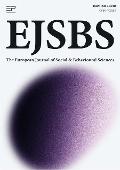
The European Journal of Social & Behavioural Sciences
Online ISSN: 2301-2218
European Publisher
Enhancing Ninth Grade Students Understanding of Human Circulatory System Concepts Through Conceptual Change Approach
Table 2: Students' Misconceptions Concerning the Human Circulatory System
| 1 | Fat is not found in plasma. |
| 2 | Vitamins are not found in plasma. |
| 3 | Uric is not found in plasma. |
| 4 | All plasma proteins are used to meet cells' amino acid needs. |
| 5 | All plasma proteins help material transport across capillaries. |
| 6 | All plasma proteins catalyze reactions in blood. |
| 7 | The shape of red blood cells allows them to hold more hemoglobin. |
| 8 | The shape of red blood cells allows them to be in close contact with body cells. |
| 9 | The shape of red blood cells allows them to pass through capillary walls more easily. |
| 10 | The thick and elastic wall of arteries helps maintain high blood pressure. |
| 11 | The thick and elastic wall of arteries helps prevent heat loss. |
| 12 | The thick and elastic wall of arteries pumps blood under high pressure. |
| 13 | When blood pressure in the capillaries increases above normal level, tissues gets fewer nutrients. |
| 14 | When blood pressure in the capillaries increases above normal level, carbon dioxide accumulates in cells. |
| 15 | When blood pressure in the capillaries increases above normal level, the amount of oxygen diffusing out of capillaries increases. |
| 16 | Heart beat is reflex. |
| 17 | The brain sends stimulus to the senatorial node to initiate heart contraction. |
| 18 | Heart beat occurs when we breathe. |
| 19 | Ventricular filling occurs mostly during atrial contraction. |
| 20 | Ventricular filling occurs mostly during ventricular ejection. |
| 21 | Ventricular filling occurs mostly during contraction of atrioventricular valves. |
| 22 | Veins have the lowest blood pressure compared to other blood vessels because veins have the thinnest walls. |
| 23 | Veins have the lowest blood pressure compared to other blood vessels because gravity interferes with blood flow. |
| 24 | Veins have the lowest blood pressure compared to other blood vessels because blood velocity is the lowest in the veins. |
| 25 | Low blood velocity in capillary is due to their small diameter. |
| 26 | Low blood velocity in capillary is due to material exchange through capillaries. |
| 27 | Low blood velocity in capillary is due to their long distance from the heart. |
| 28 | In the systemic circulation, percent of blood volume in the arteries, and capillaries, and veins is equal. |
| 29 | In the systemic circulation, percent of blood volume in the arteries and capillaries is equal, which is greater than that of veins. |
| 30 | In systemic circulation, the percent of blood volume in the arteries is the highest, while the blood volume in the veins is the lowest. |
| 31 | Contraction of heart is one of the factors that help blood return to the heart. |
| 32 | Pressure created by the valves in the veins is one of the factors that help blood return to the heart. |
| 33 | Cohesion between blood and blood vessels is one of factors that help blood return to the heart. |
| 34 | Blood from the left and right halves of the heart goes to all parts of the body. |
| 35 | Blood from one side of the heart goes to the right side of the body. Blood from the other side goes to the left side of the body. |
| 36 | Blood goes into the heart on one side. Blood leaves the other side and goes to all pans of the body. |
| 37 | When blood reaches the cells, it stays inside blood tubes that go to and from the cells. |
| 38 | When blood reaches the cells, it leaves the tubes and bathes the cells. |
| 39 | When blood reaches the cells, some of it stays inside blood tubes and some leaves the blood tubes and bathes the cells. |
| 40 | When environmental temperature increases, skin tacks a red appearance because the velocity of the blood increases. |
| 41 | When environmental temperature increases, skin tacks a red appearance because the diameter of the capillaries increases. |
| 42 | When environmental temperature increases, skin tacks a red appearance because blood pressure increases. |
